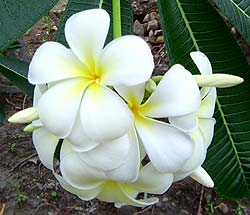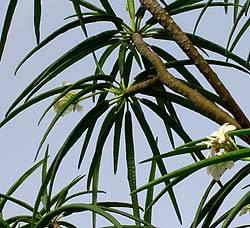| GreenGardeningCookingCuring.com | FRANGIPANI
PAGE |
| HOME |
| Tour Our Destination Websites | Taxco-Today.com | Oaxaca-Today.com | Montserrat-Today Site |
| See our silver designs at Krika.com | Read our travel stories and other tales at Krika.com |
|
|
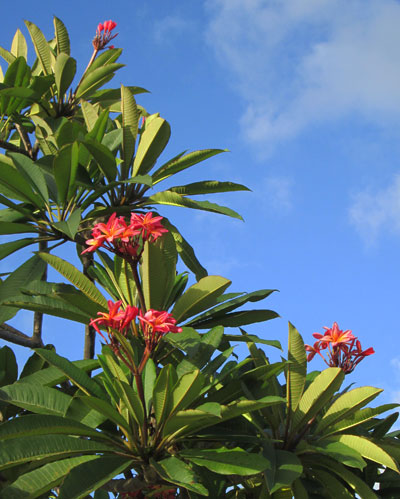 Frangipani
Unknown Variety Frangipani
Unknown VarietyBenefits: From: Photographed: In Crown Point, Tobago, in 2018. Planting and Care: Text and Photograph ©GreenGardeningCookingCuring.com 2018 |
|||
 |
|||
|
|||
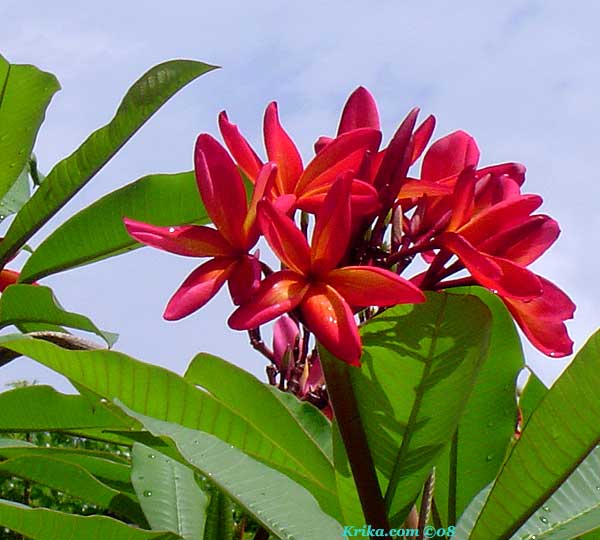 |
|||
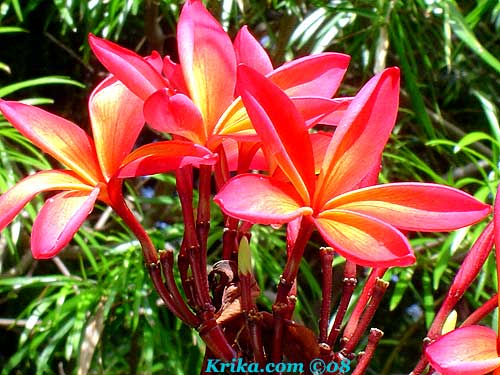 |
|||
|
|||
 |
|||
|
|||
 |
|||
| One
of the pests to watch for is the Pseudosphinx_tetrio caterpillar.
They are spectacular to look at as you can see in the photographs,
but with the capacity to grow to six inches, better not to wait.
Hand pick them off whenever you see them or they’ll ravage
the new leaves on your frangipani. These caterpillars also like
to eat yellow allamanda, Allamanda cathartica, but I think
they prefer frangipani. Watch for very large dark brown moths in
the garden. Eliminating these moths that have a five inch wingspan
will prevent the next stage in their life cycle, the voracious
frangipani caterpillar. Photographed: Below on the left in Crown Point, Tobago, in 2018 and on the right in the garden of our former home in Montserrat. Text & Photographs ©Krika.com 2008/2010 and ©GreenGardeningCookingCuring.com 2018 |
|||
  |
|||
| **Frangipani
Tree Variety Unknown Flourishing in full sun, many of the odd-looking frangipani plants lose all of their leaves every year for several months. Shorn of its leaves, the frangipani rests and finally blooms with fragrant, velvety, very showy flowers. These are the blooms used in making leis in Hawaii. In Mexico the flowers are joined in long strands as decorations on religious holidays. We had several at our former home in Montserrat and one in our former home in Taxco, Mexico. Most members of this family rarely grow more than fifteen feet tall, but this odd member of the family grows almost as a normal small tree and has long thin leaves. Benefits: The sticky white sap is poisonous, but I have read that it may be used externally to get rid of warts. From: The frangipani is native to southern Mexico, the Caribbean and Central America. Photographed: In all areas of our garden at our former home in Montserrat. |
|||
|
|||
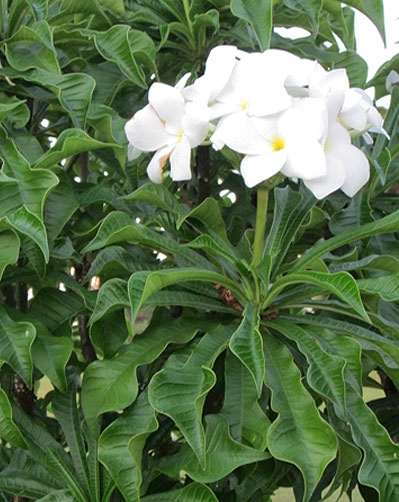 Bridal
Bouquet, Bridal Bouquet, White Frangipani, Fiddle Leaf Plumeria,
Wild plumeria Plumeria pudica Bridal
Bouquet, Bridal Bouquet, White Frangipani, Fiddle Leaf Plumeria,
Wild plumeria Plumeria pudicaThis is a very unusual member of the plumeria family as it blooms almost year round and it never sheds its leaves. That alone would make it very appealing, but its leaves are also striking and the flowers are truly as beautiful as they are plentiful. Photographed: In Crown Point, Tobago, in 2017. Planting and Care: The ideal situation for this plant is in full sun, but it will also tolerate a bit of shade. It is fast growing; it will grow to the size of a small tree in no time at all. As if all of that were not enough to recommend it, it is resistant to many of the pests that can affect other frangipanis and it will handily adapt to dry periods. Text Copyrighted ©KO 2010 and photographs ©GreenGardeningCookingCuring.com 2018 |
|||
 |
|||
|
|||
|




